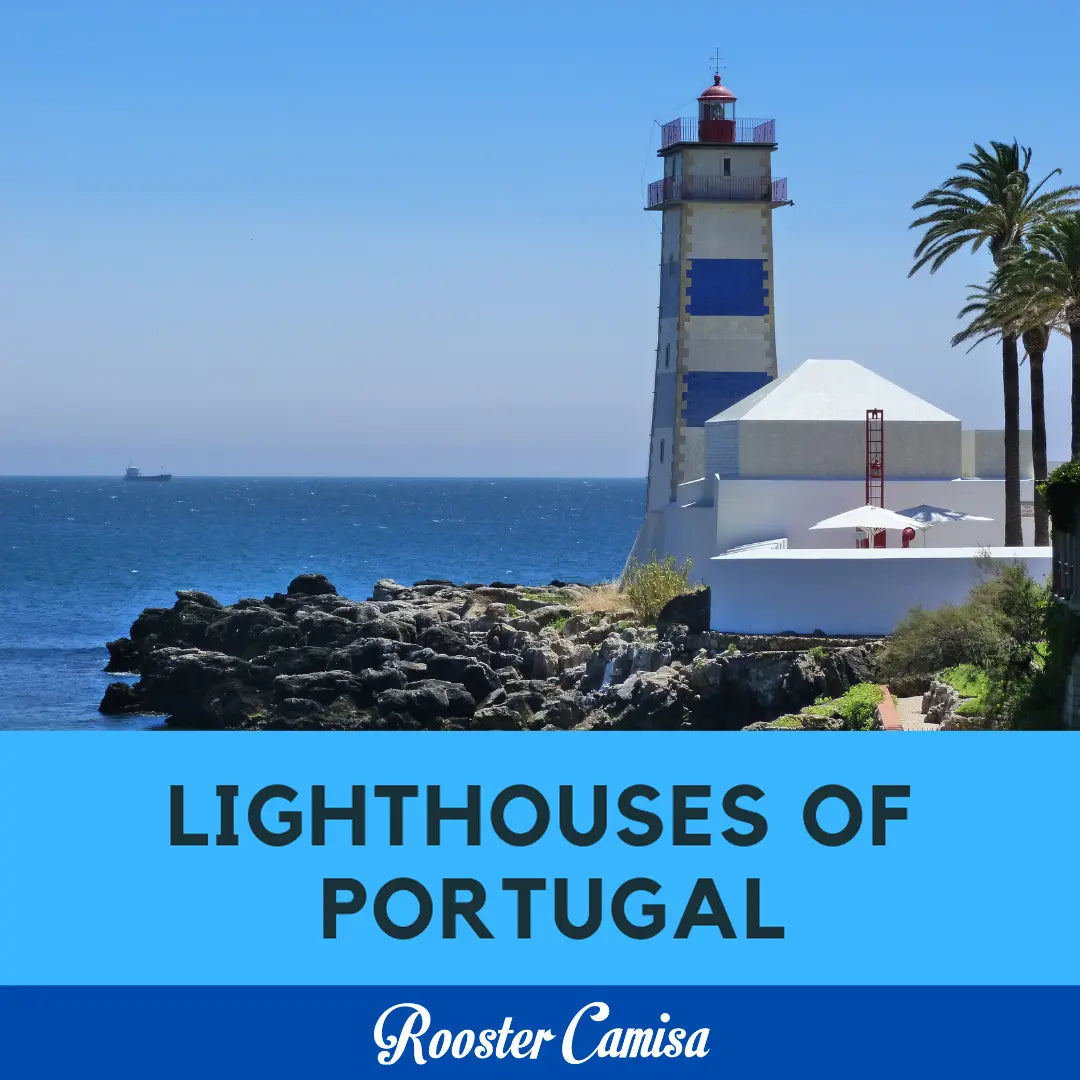Being a coastal nation comes with the privilege of having stunning borders where land meets the sea. Between Portugal’s mainland, the Açores islands, and Madeira, there are approximately 1,160 miles of beautiful coastline. The many benefits of an extensive coastline come with the vital role of keeping seafarers safe. Thus, it is that the Portuguese have always been faithful keepers of the light with numerous lighthouses. The Portuguese word for a lighthouse is farol, and a small light beacon is often called a farolim. A lighthouse’s merit is undeniable as it functions to keep mariners safe, and for many, it holds an emotional value. Lighthouses serve as a reminder of human connection even in the darkest of times.
With a rich maritime history, Portuguese ships have been navigating their way home for over 600 years. For that to happen, lighthouses have held an important place in Portuguese history. On the mainland of Portugal, there are 50 lighthouses, 34 on the Açores islands, and seven on Madeira. With such an array of lighthouses to appreciate, there’s no way to capture them all in one writing. Because of that, this blog serves as a broad overview of Portuguese lighthouses, and it holds a promise to devote future blogs to individual lighthouses.

The Navy formerly owned Portuguese lighthouses; these lighthouses are now operated by the Lighthouse Directorate, the National Maritime Authority agency. The oldest lighthouse in Portugal is the São Miguel-o-Anjo. In 1528, D. Miguel da Silva, bishop-elect of Viseu, ordered the construction of the chapel of São Miguel-o-Anjo, which would simultaneously function as a lighthouse to assist navigation off the coast of Portugal. The oldest lighthouse in the Açores is the Farol Ponta de Arnel. Built in November of 1876, it was built in the context of modernizing Sao Miguel island. The oldest lighthouse in Madeira is the Farol da Ponta de Sao Lourenco. Constructed in 1870, it marks the most extreme eastern point of the island.

The height of a lighthouse’s light is measured from the distance of the water’s surface to the optic’s focal plane, the center of the lighthouse’s optic. The tallest tower on a lighthouse in Portugal is Farol de Aveiro/Farol da Praia da Barra. Situated on the coastal beach of Praia da Barra and the southern marge of the Ria de Aveiro, it has a 216-foot focal point. The Farol da Ponta da Barca is the tallest lighthouse in the Açores. Located on the Graciosa, it’s 75 feet tall, sitting on an 80-foot cliff with a 155-foot focal point. Ponta do Pargo is the tallest lighthouse in Madeira. Built in 1922, this lighthouse sits on a 951-foot cliff with a tower that’s 45 feet tall. Ponta do Pargo is the tallest Portuguese lighthouse with its 1,023-foot focal point.


The Farol da Ponta dos Capelinhos, situated on the island of Açores island of Faial, bore witness to a massive volcanic eruption that changed the course of many Açorean lives. Built in 1903, Farol da Ponta dos Capelinhos survived the volcanic eruption of 1957, which buried the entire first floor of the lighthouse and, despite repairs, remains under ash and rock to this day. Madeira’s Farol da Ponta do Pargo is the most popular lighthouse in Madeira, but it is also the most visited lighthouse in the Açores and Portugal. It averages over 14,000 visitors per year!
Portuguese lighthouses hold an important and beloved place both from a historical and emotional perspective. While how they’ve been powered has changed, their potential for continuing to contribute in several ways has not. In today’s global competition for tourism, there’s speculation that Portuguese lighthouses, with their coastal settings, allows them to be used as focal points for tourists. Without neglecting their primary function related to navigation safety, they’ll remain beacons of hope for a better future with their heritage value, history, stories, and privileged geographical locations. For Portugal, the Açores, and Madeira, their lighthouses not only continue to make seafaring journeys safer, but they’re also timeless reminders of the power of steadfast connections. It’s not surprising that lighthouses have played an important role in Portuguese culture and are treasured national monuments today.
Written by Margaret Resendes Peek

